10 Strategies to Successfully Overcome Mental Blocks

Sorry, there were no results found for “”
Sorry, there were no results found for “”
Sorry, there were no results found for “”
A deadline is fast approaching. You’re sitting at your desk, staring at a blank screen, wracking your brain for new ideas or a string of coherent sentences. You type something, delete it, and type the same thing all over again.
No matter how hard you think, your mind continues to draw up a blank. All this while, the clock merrily ticks away, which, of course, doesn’t help.
Does this high-pressure situation sound familiar?
If you answer yes, then you are familiar with mental blocks.
You’re not alone. Everyone, from athletes to creatives to leaders, experiences mental blocks in one form or another. It’s easy to navigate and overcome mental blocks. Let’s walk through various practical techniques that help!
So, let’s get started.
A mental block is an invisible barrier or psychological obstacle that hinders an individual’s ability to think, concentrate, or perform a specific task. When you start feeling stuck, you no longer feel motivated.
The loss of motivation affects productivity and makes the task appear even more difficult. This destructive cycle dulls creativity and brings everything to a grinding halt.
Now that you have a basic idea of mental blocks let’s look deeper at what causes them. Some of the most common causes of mental blocks include:
Mental blocks can manifest in different shapes and forms. For some, it could take the shape of creative blocks. In some cases, it could be a memory block or emotional overwhelm.
Others may have trouble deciding or expressing themselves. With such diversity, it is difficult to identify mental blocks.
However, next time you feel blocked at work, ask yourself the following questions to understand whether it is a temporary setback or a mental block:
Of course, the above list is not comprehensive. However, you may need help with mental blocks at work if you can relate to some or most of the questions above.
Fortunately, we have the right set of solutions that’ll help!
Mental blocks, if left unchecked, can have catastrophic consequences. It erodes your self-worth, confidence, motivation, and productivity. It also takes up much of your mental bandwidth and seeps into other aspects of your life, such as your interpersonal relationships, behavior, and mood.
To prevent such a situation, we have 10 excellent tips to help you get over a mental block.
Are you feeling overwhelmed? Unable to reach a decision? Need help to remember something specific?
Step away and take a breather.
Detaching yourself from the stressor is one of the best ways to get out of a creative rut. So, go ahead and take a break. Disconnect from the task or project and avoid thinking about the problem. Instead, focus on things that bring you joy.
Mindfulness, meditation, and physical activity reduce stress. The shift in perspective fuels your subconscious mind to seek alternatives and innovative solutions that will simply come to you when you return to the task.
Make it a point to keep these breaks short and periodic.

A chaotic and cluttered work environment elevates cortisol levels—a hormone that increases stress and anxiety. Such a heightened emotional state leads to mental exhaustion and paves the way for mental blocks.
To address this, start by decluttering your workspace. It is not restricted to your physical spaces but includes digital clutter. Exit additional tabs, clear out your desktop, delete the unwanted files or versions, and close the background applications.
Consider replacing the multivariate apps, tools, and platforms with a unified and comparable equivalent like ClickUp. It will centralize operations, minimize flipping between apps, and maintain scalability through intuitive integrations!
With ClickUp, optimize workflows, minimize digital clutter, and focus on what truly deserves your attention.
A change of scenery does wonders. Working in a new environment helps you overcome mental fatigue. It is a mental reset that grants a fresh perspective and stimulates creativity. Doing so allows you to think outside the box and break the established patterns stemming from recurring thoughts and stagnated ideas.
Push yourself to step out from the familiar. Relocate rooms if you work from home or your favorite coffee place. Explore the great outdoors to feel inspired, or switch things up at your desk.
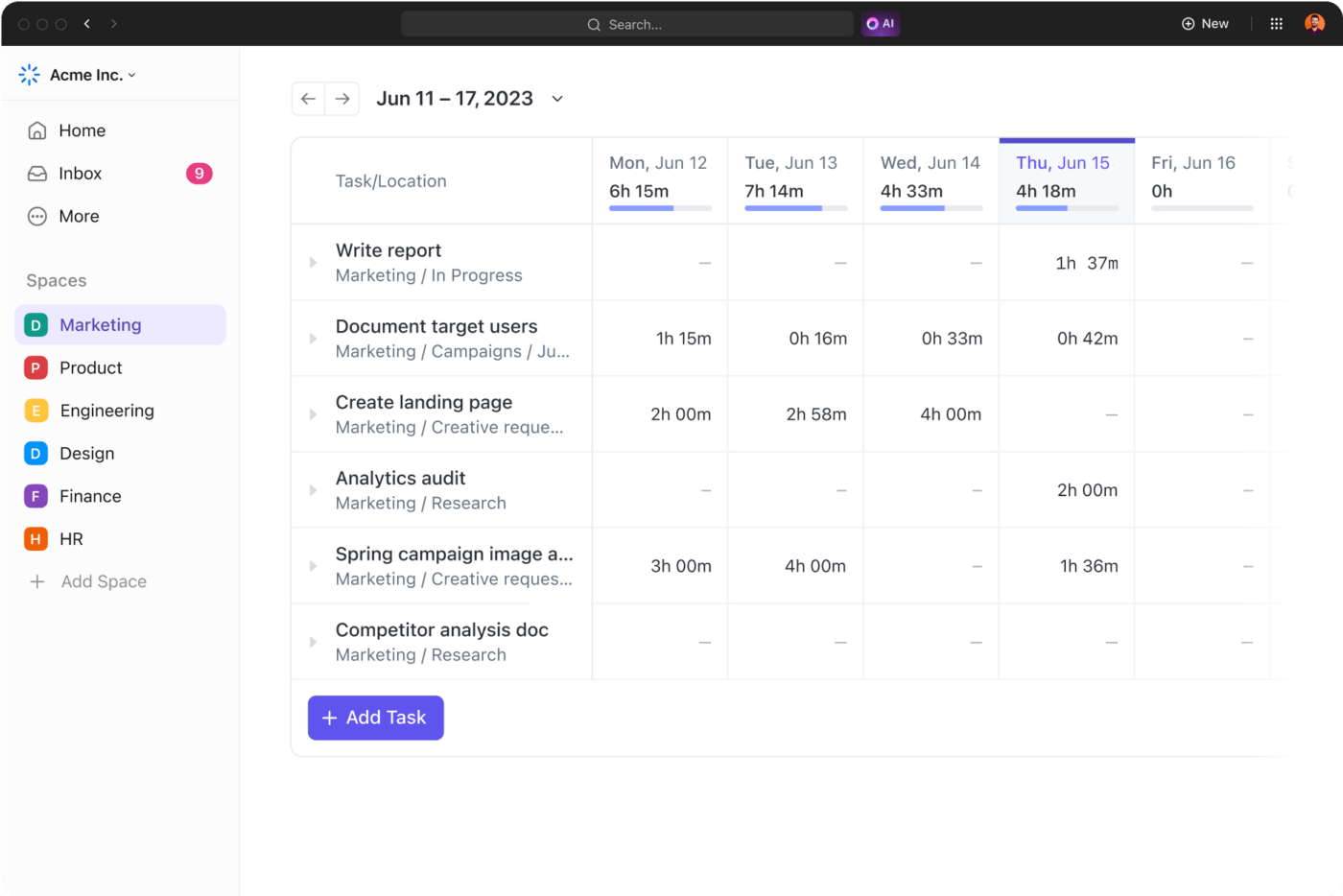
Time blocking is an excellent focus technique that dedicates specific periods to tasks. Doing so lends structure to tackling tasks while eliminating any potential distractions or context-switching that contribute to mental blocks.
The planning phase of time blocking also involves task prioritization, making it easier to maintain efficiency by addressing tasks calling for immediate attention. Such a routine reduces cognitive load, establishes routine, and grants you control over the workflow.
The Pomodoro technique complements time blocking, allowing you to work in bursts of 25 to 50 minutes followed by a 5 to 10-minute break. Pair this combination with a time-tracking tool and effortlessly alternate between work and break intervals for sustained motivation, lower stress levels, and fewer mental blocks.
Bonus: Check out 10 Time-Blocking Templates to stay focussed
Humans are visual learners. Visualization is a great strategy to overcome mental blocks due to task complexity and volume.
Our minds quickly grasp concepts, comprehend (or articulate) ideas, and draw relationships visually—sometimes in as little as a tenth of a second!
Visual aids like charts, diagrams, infographics, and mind maps front-load value and make it instantly accessible. You no longer have to scroll through a wall of text to identify the key data sets or actionable points—a simple to-do list breaks visual monotony and communicates the same effectively.
Visualization techniques also offer perspective during problem-solving and help innovate and find creative solutions.

In today’s digital age, everyone wants to learn how to focus and live in the present moment. The barrage of notifications, alerts, and updates leaves our minds adrift. Plus, the constant influx of information is stressful and overwhelming.
We’ve already discussed how time blocking limits exposure to such distractions while helping you stick to a routine. That’s one of the ways to create a dedicated and distraction-free workspace.
Other strategies include fighting the urge to check your phone, email, and socials frequently. Set aside dedicated time slots to catch up on such distracting activities.
Establishing healthy boundaries with your colleagues, friends, and family ensures deep focus during work hours. Divide your office hours into periods of standalone work and collaboration mode to work without distractions.
Breaking down large projects into smaller tasks is a great way to overcome mental blocks. Large and complicated projects can leave one feeling overwhelmed. The crippling indecision and sense of paralysis transform even a simple act of getting started into a mammoth challenge.
A lack of this mission-critical starting point for the project will inevitably lead to the onset of a mental block.
So, start by dividing the entire project into smaller, more manageable tasks. Break down the small tasks into subtasks until you reach the individualistic unit. Use Outliner apps to do this job efficiently.
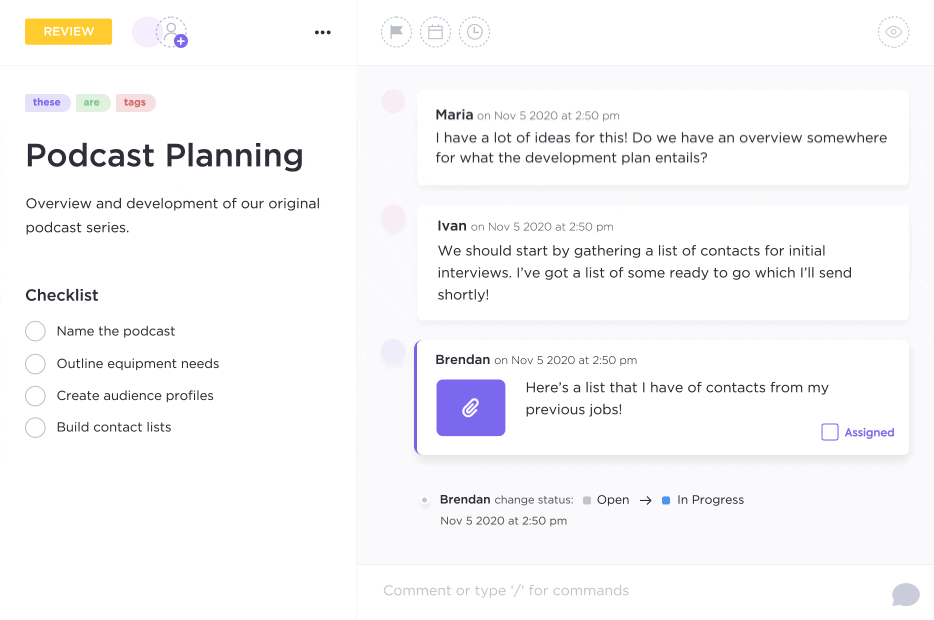
Once you have a functional to-do list, work your way through it. After completing each task, the sense of accomplishment will put you in a positive headspace. Such renewed confidence, coupled with the tangible proof of progress, builds momentum toward achieving success.
If you grapple with mental blocks where creative ideas are elusive, try free writing or brain-dumping.
Freewriting is a liberating technique where you overthrow the grammar rules, sentence structure, or anything that limits you. The point is to foster expressive and creative thinking to get out of the comfort zone.
Give words to your thoughts and ideas, no matter how random or incoherent. This unrestricted flow allows you to break free from self-doubt and judgment.
A creative, safe space deconstructs established thought patterns, encourages experimentation, silences the inner critic, and helps overcome the fear of failure.
Use AI copywriting tools for freewriting or mind-dumping prompts, and the world is yours for the taking.
They say many hands make light work, so how about applying the same to your creative process?
Collaboration and collective thinking let you step outside your perspective and view problems or solutions in a new light. Connect with your peers or domain experts and relay the challenges you face.
Sometimes, expressing the problem, the clarity and insights required to devise an innovative or creative solution.
You can connect with like-minded individuals through online forums, social platforms, or creative apps for greater exposure to diverse thoughts, ideas, experiences, and perspectives.
Embrace feedback and inputs as they foster a supportive and synergistic environment aimed at overcoming obstacles. At the same time, it destroys the isolating effect of a mental block.
Inspiration is the runway for creativity to take flight. After all, you are what you consume, including artistic inspiration.
Seeking inspiration stimulates motivation, births new ideas, and reignites passion. For this reason, those facing writer’s block are encouraged to read more or use content writing templates to get their creative juices flowing.
Exposure to different art forms can shape one’s perspective and thoughts that fuel the creative process. Someone’s magnum opus can be your fodder to create something equally compelling. Such external influence whets the drive or motivation to overcome mental blocks.
ClickUp is an all-in-one project management and productivity tool that helps you overcome mental blocks through its rich features and functionalities. Since everything comes packed in a single solution, you don’t need an elaborate tech stack of multiple tools and platforms to get work done—with ClickUp, one is all you need!
Circling back to the ClickUp features and functionalities that help you get over a mental block, some of these include:
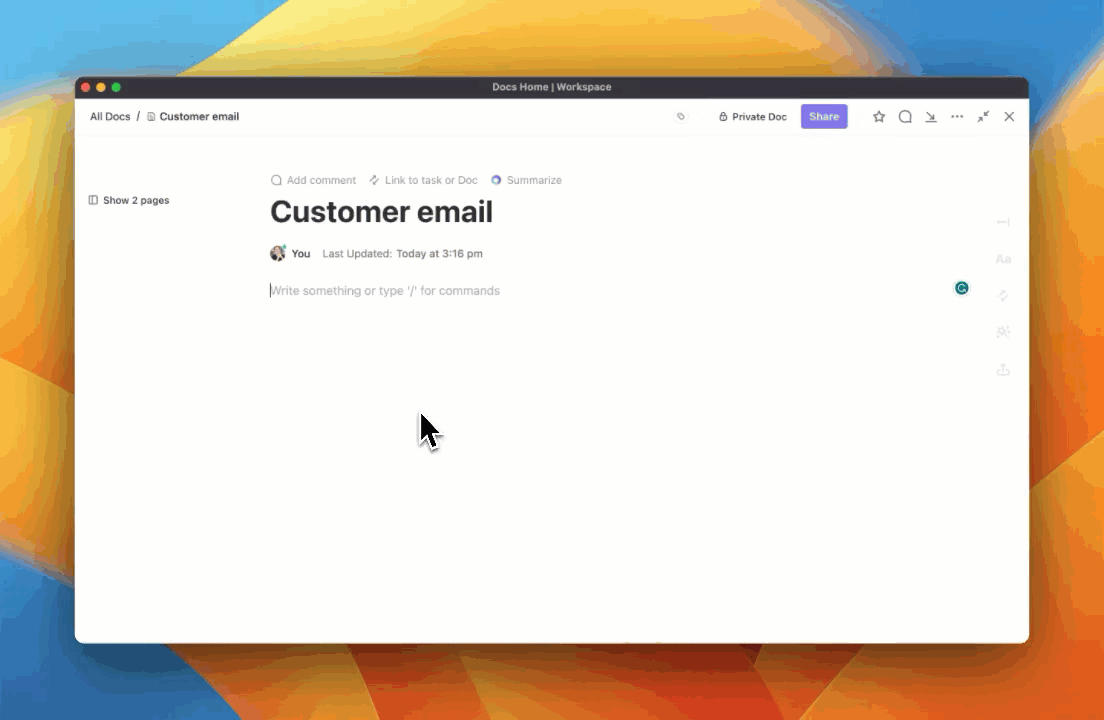
Let’s face it: not all of us possess the eloquence of Shakespeare or the poetic prowess of Wordsworth when it comes to working with words. This is where ClickUp AI comes to the rescue.
Whether you’re a developer preparing a feature list or a writer creating an article outline, ClickUp AI understands your specific needs while generating the right kind of content for you.
ClickUp AI goes beyond content generation, serving as a guide and assistant while working on different documents or content formats. Use it to ensure consistency in brand voice, tonality, and simplicity while presenting your ideas.
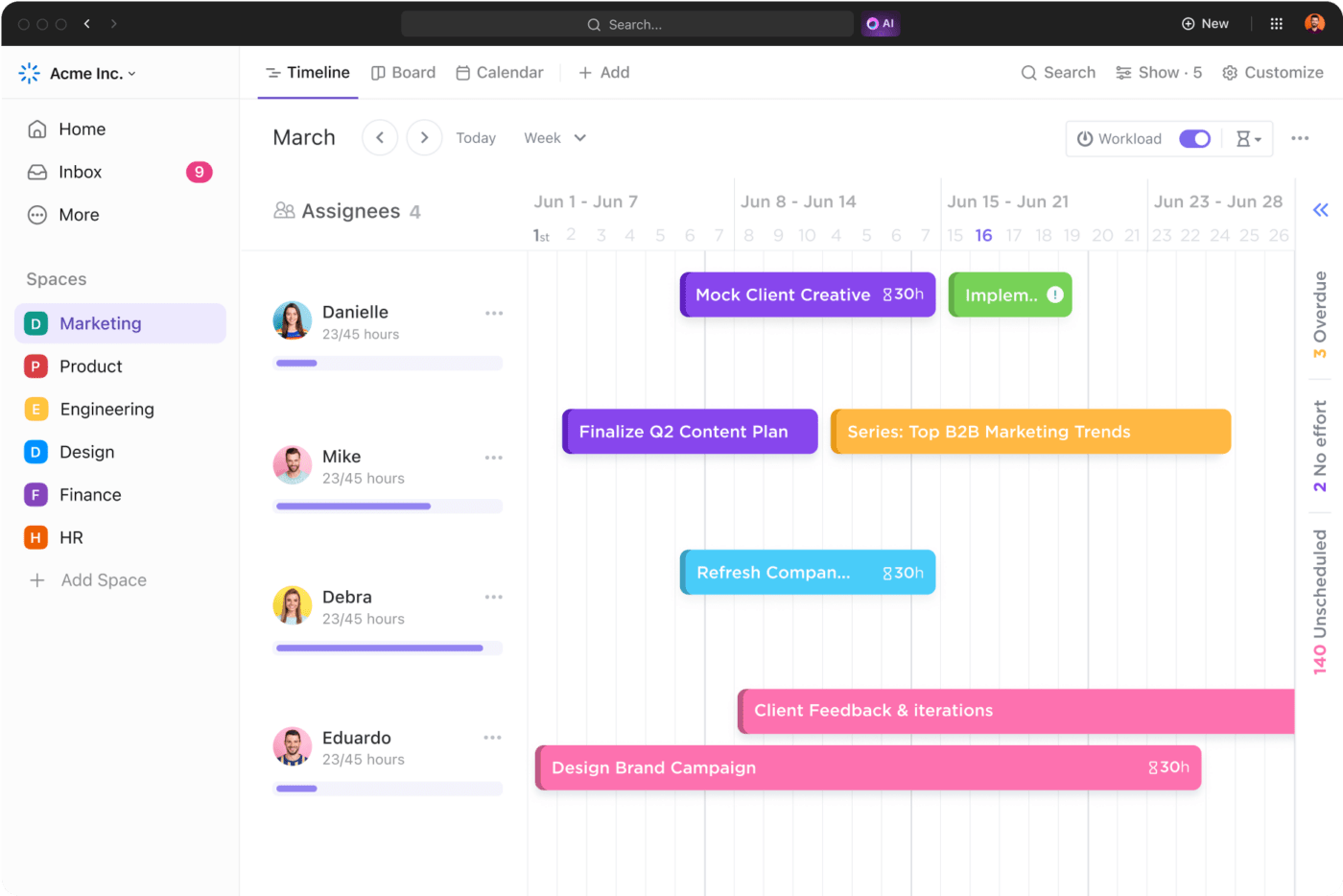
Remember how visualization decomposes task complexities to the essential basics? ClickUp empowers you with this precise benefit.
It acts as your single-stop dashboard that offers a comprehensive overview of the entire project. You can view this information in different forms having different purposes.
For example, the Kanban view demonstrates the task progress while timelines help with deadline management, and to-do list views facilitate linear disposal of work. Switching the view will change the work environment, which helps overcome mental blocks.
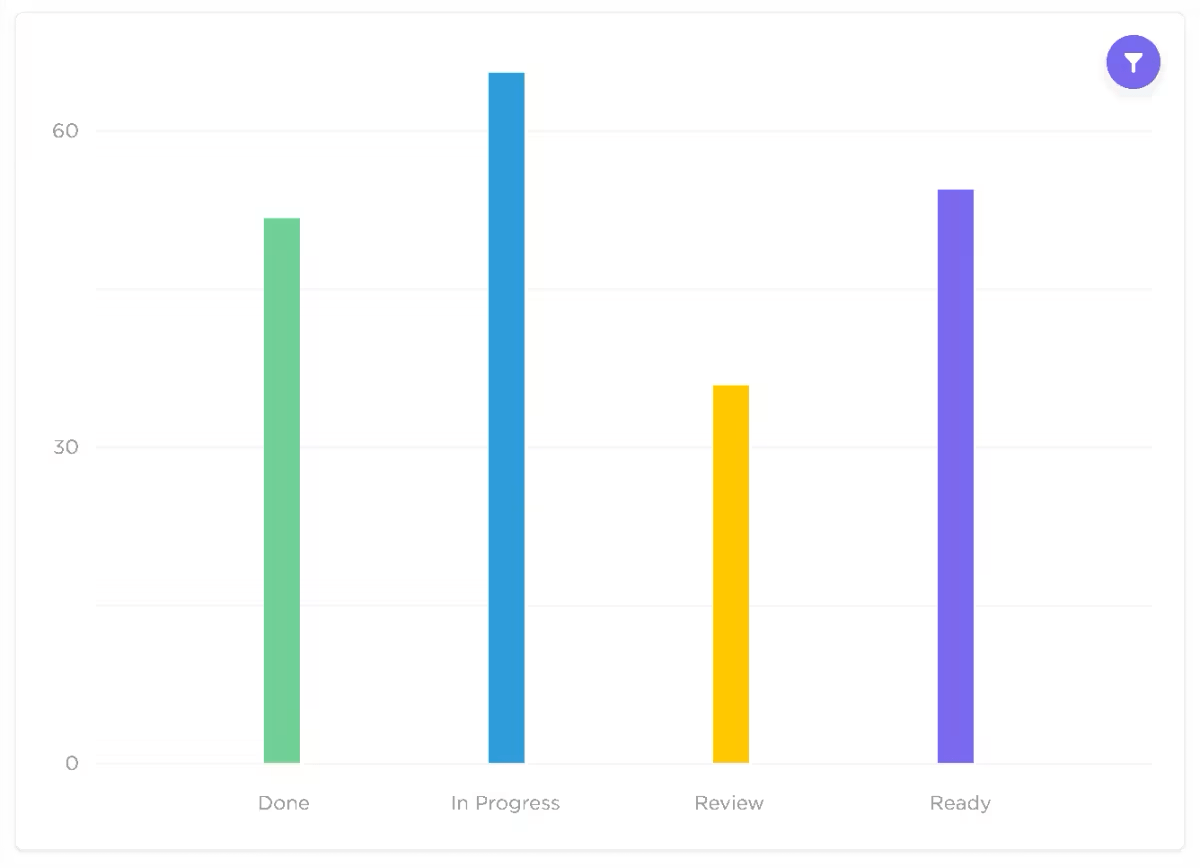
ClickUp is a dynamic platform for real-time progress tracking of the project as a whole and also of its underlying components. Access visual indicators like progress bars that chart your growth across the proposed roadmap and the milestones achieved.
They also offer insight into how your input contributes to overall success. Such transparency and alignment of individualistic efforts with long-term goals grant a sense of fulfillment and belongingness. Plus, having tangible proof of progress instills confidence, boosts morale, and sustains motivation to keep mental blocks at bay.

Too much work or a never-ending to-do list adds to the cognitive load. It impacts mental health by triggering feelings of stress, fatigue, and overwhelm, which can manifest as mental blocks.
ClickUp allows you to automate repetitive tasks and processes to save time and effort. Doing so frees up mental bandwidth to pursue more challenging, strategic, and creative tasks that feel more rewarding.
At the same time, automation ramps up efficiency and accuracy, which improves productivity and elevates the performance average.

With ClickUp’s project management capabilities, break down projects into small tasks and subtasks to make them more manageable. Such a detailed work breakdown helps overcome mental blocks linked to the feeling of the project being too huge, complex, or daunting.
Stripping the project into a series of tasks helps develop a structured and practical roadmap for success. You get to prioritize tasks depending on the impact, urgency, or underlying dependency for greater mental clarity and logical sequencing. The resulting focused approach will combat mental blocks and enhance efficiency.

ClickUp is more than your run-of-the-mill project management tool. Use it as a social working and collaboration platform. Whether creating, editing, or sharing documents through ClickUp Docs or communicating with team members over chat, ClickUp seamlessly orchestrates every interaction.
Leave comments, assign tasks, share project collateral, and send instant messages in a few clicks. Such a collective approach to working brings diversity of thought, promotes the exchange of ideas, and fosters innovation to help overcome challenges.
That wraps up our list of tried and tested strategies to overcome mental blocks. Remember that this journey is intimate and personal, depending on your behaviors and preferences.
For instance, a change of environment can be excruciatingly disruptive for someone while bringing a sense of calm to someone else. Similarly, freewriting can cause mental blocks to some! Mental blocks are a universal challenge; some self-awareness, exploration, and strategic interventions help you get out of the rut. Remember that AI-powered tools like ClickUp support your goal of triumphing over most common mental blocks and harnessing your complete creative potential!
© 2026 ClickUp